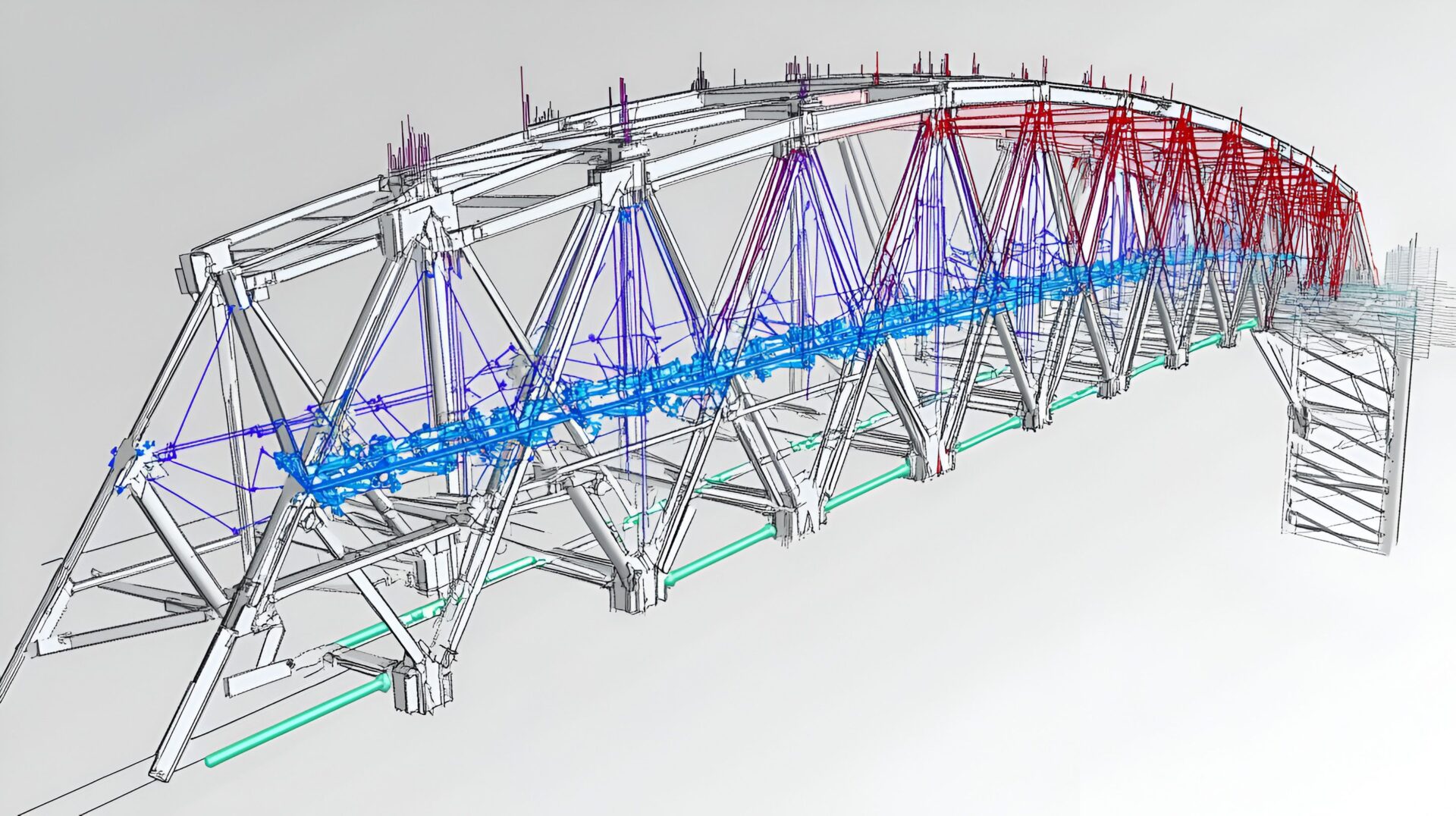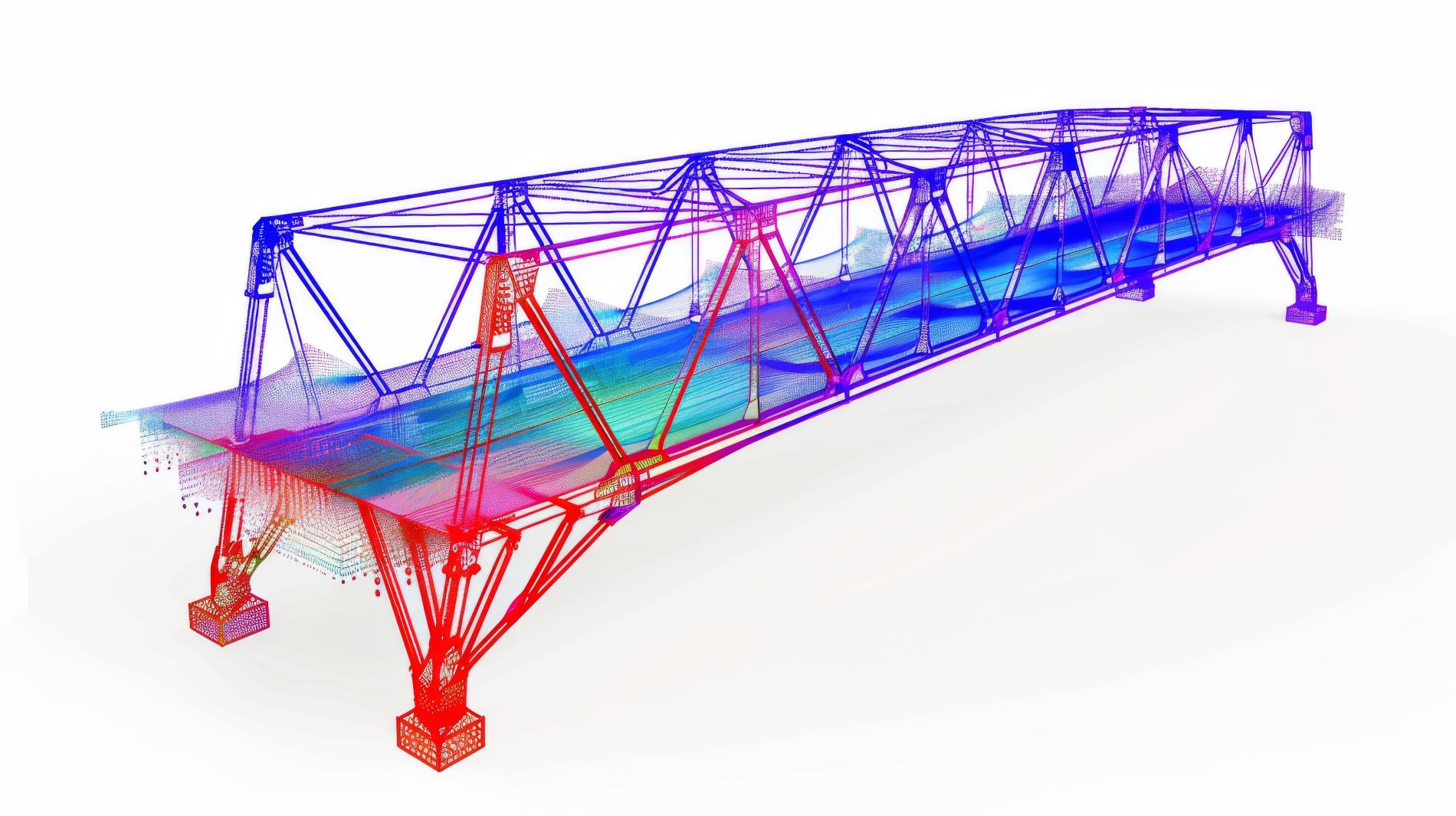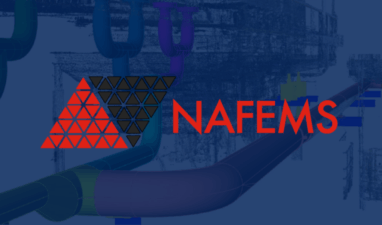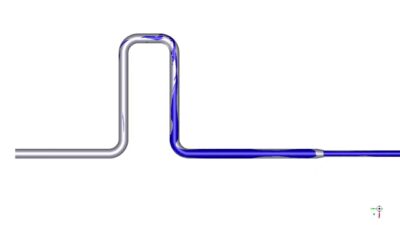
What is structural mechanics?
Understanding the field of structural mechanics, why it's critical to so many different industries and how we do it.
Structural mechanics is a key field of engineering that enables us to ensure structures are safe, strong and stable enough to withstand all the forces they experience in the real world.
When we look at structural mechanics, we’re studying how structures behave when subjected to various loads, such as forces, pressure, and environmental conditions. If we think about a bridge or a high-rise apartment block, the only way they’re able to stand safely is because all things relating to their structural mechanics were considered in the design phase.
It’s critical to the design of structures across a range of industries, from civil engineering and aerospace to oil and gas and everything in between. In this article, we’ll discuss why the study of structural mechanics is so important and how we, as an engineering consultancy, use it to help our clients solve their problems.
Quick links:
- Why is structural mechanics important?
- Fundamental concepts of structural mechanics
- Forces and loads
- Stress and strain
- Deformation
- Equilibrium
- How do we solve structural mechanics problems?
Why is structural mechanics important?
For the construction of any building or structure to be safe, reliable, and durable, it must be able to withstand certain loads, including pressures and even unpredictable events such as extreme weather conditions.
We know that when any material is subjected to external load it deforms, so studying the mechanics of these materials allows us to predict the deformation generated which can be used to predict and prevent the failure of the structure.
The field of structural mechanics is important for any construction that needs to support weight, travel or simply just stand tall. Essentially, structural mechanics can help us to answer important questions such as:
- Will a skyscraper withstand strong winds or an earthquake?
- Will an aeroplane stay intact through turbulence or drag during a flight?
- Will a bridge be able to safely carry the load of various vehicles at any one time?
Getting answers to all of these questions and more is the core purpose of structural mechanics, and below we’ll guide you through how we do this.

Fundamental concepts of structural mechanics
There are many different principles that come into play when we’re analysing structural mechanics, and these fundamental concepts all revolve around understanding how structures behave under various forces or loads.
Before we go into the individual factors at play, it’s worth understanding the way that many of them are rooted in Newton’s Second Law of motion – force equals mass times acceleration (F = ma) – which explains how the motion of an object changes when a force is applied to it.
This law tells us that the force acting on an object is equal to the object’s mass multiplied by its acceleration. For example, if you push a car (with a certain mass), the harder you push (the greater the force), the faster it will speed up (accelerate). However, a heavier car (greater mass) will need more force to get the same acceleration behind it.

In structural mechanics, it helps us to analyse how structures handle various loads and essentially underpins the entire analysis of how structures remain stable, resist deformation, or fail under different loads.
With that in mind, here are some of the key principles of structural mechanics:
1. Forces and loads
When performing structural analysis, we’re dealing with various loads and forces which can lead to deformation if the structure isn’t designed properly. These may include:
- Dead loads: The permanent weight of the structure itself such as walls, beams and columns
- Live loads: Any load that can be changing or temporary, such as traffic moving over a bridge
- Environmental loads: External forces like wind or earthquakes
- Impact loads: Sudden forces such as vehicles crashing into any structures or heavy objects falling
Using Newton’s Second Law, we can get a better understanding of how any of these loads could affect structures, and adjust the design accordingly to ensure it’s able to resist the impact of these forces.
2. Stress and strain
Stress is the force inside a material that happens when external load is applied, so essentially the pressure that the material feels. It’s calculated by dividing the force by the area over which the force is applied:

Understanding how force (F = ma) works can helps us to figure out how much stress will build up inside a structure, potentially causing it to fail.
Strain refers to how much a material deforms when a force is applied and is measured by the change in length divided by the original length. Strain can be categorised into two different types:
- Normal strain: when an object lengthens in response to normal stress, perpendicular to a surface
- Shear strain: changes caused by shear stresses, parallel to a surface
By calculating the stress and strain on a structure from an external load, we can make informed design decisions to prevent these types of changes to the material.
4. Deformation
As we mentioned earlier, when a load is applied to an object this leads to deformation which may take any form such as bending, twisting or sagging. This deformation might be elastic (temporary) or plastic (permanent), depending on the properties of the material.
By predicting how a material will behave under various load conditions, we can control this deformation by adjusting the design to make sure it doesn’t bend, sag or twist.
5. Equilibrium
Equilibrium is one of the most fundamental concepts as it’s essential for ensuring structures remain stable under loads. Newton’s Second Law tells us that a structure will accelerate if the sum of the forces and moments (rotational forces) acting on it isn’t zero, in which case the design will need to be revised.
This is expressed mathematically as:
ΣF = 0(Sum of forces is zero)
Σ𝑀 = 0 (Sum of moments is zero)
Essentially, this equation is used to calculate how much force is needed to move, stop, or hold objects still. What we want to then achieve here is a balanced equilibrium, meaning that all forces acting on a structure are balanced so it won’t move or collapse.
These are just some of the key engineering principles we’ll use to accurately carry out a structural analysis in order to lay the foundation for a safe, efficient and durable structure.

How do we solve structural mechanics problems?
When tackling a structural mechanics problem, we follow a systematic approach that combines analysis, design, and testing. Each structure will face its own challenges but this same process will typically be very similar across the board and is applicable to both new concepts and existing structures that have suffered mechanical failures.
1. Define the problem
First, we need to understand which type of structure we are analysing so we can define the specific types of loads and forces we need to consider. If the fundamental knowledge is there, it will be fairly straightforward to figure out if we’re dealing with dead loads, live loads or environmental loads.
In this stage we’ll also establish our objectives – are we trying to ensure the structure can handle everyday use? Resist extreme forces? Or minimise its deformation?
2. Model the structure
The way we’ll be able to test the impact of these loads is to create a mathematical or digital model using methods like finite element analysis (FEA).
Here, we want to break the structure into smaller, manageable elements to be able to conduct detailed analyses of how each part behaves under load.
3. Analyse forces and stress
Engineering methods like stress analysis and FEA are critical to the field of structural mechanics as they allow for precise calculations of stress and strain.
Using the model we’ve created, we can apply these forces in a controlled environment and predict how they will behave in real-life conditions.
If you want to read more about how we do this sort of analysis, we have an in-depth blog here: What is Finite Element Analysis (FEA)?

4. Evaluate results
Understanding how to interpret the results is critical to being able to check if the structure meets the safety requirements.
The results provided will enable us to answer key questions such as:
- Are the stresses within safe limits for the materials used?
- Is the level of deformation acceptable?
- Does the structure adequately resist the forces applied and maintain its integrity?
5. Optimise the design
Using all of the above information retrieved from the analysis, we can make decisions about improving the efficiency and safety of the design, which may involve anything from changing materials, optimising structural elements, incorporating additional supports or more.
Using FEA and other tools, we can quickly test multiple design iterations until we find the one that is the most feasible in terms of cost efficiency, strength and safety.
Need help with a structural mechanics problem?
Of course, this is a very basic outline of how we would typically solve a structural mechanics problem, but no two challenges are the same.
Our clients span a broad range of industries so whether we’re working on a structure within a power plant, a pressure vessel, an offshore structure or anything else, we’ll always approach them on a case-by-case basis. This might mean using a suite of tools such as Ansys, Abaqus and Femap to achieve the most effective outcome. It might also mean using a combination of methods such as vibration analysis or CFD to solve dynamic problems.
If you need a professional engineering consultancy to solve your structural mechanics problems, get in touch with DOCAN.
Enjoy this article? You might be interested in some of our others:





